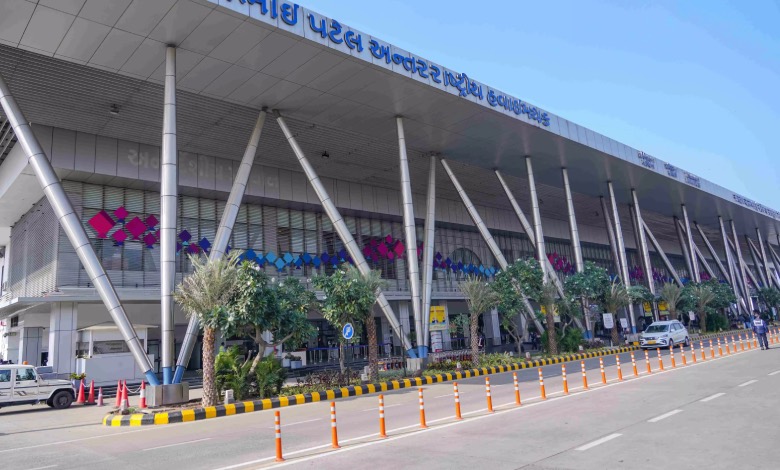Ahmedabad Airport Ranks 12th Among World’s Riskiest, Mumbai’s Chhatrapati Shivaji Maharaj Tops List

Ahmedabad: A month has passed since a tragic plane crash at Ahmedabad’s Sardar Vallabhbhai Patel International Airport, where a London-bound flight crashed into a residential area, claiming the lives of all 241 passengers on board and 19 others on the ground. The incident has reignited discussions about the need for airports to be located away from densely populated urban centers. A recent study has listed Ahmedabad’s airport among the top 50 globally most surrounded by urbanization, highlighting its associated risks.
Ahmedabad Ranks 12th in High-Risk Airports
A new study assessing airports encircled by urban sprawl identified eight Indian airports among the world’s top 50 most at-risk due to dense surrounding populations. Mumbai’s Chhatrapati Shivaji Maharaj International Airport topped the global list, while Ahmedabad’s Sardar Vallabhbhai Patel International Airport secured the 12th spot. The report, compiled by geographical experts and cited by PTI, evaluated population density within a 15-kilometer radius of airports. Higher density increases the risk of casualties during plane crashes and exposes nearby residents to heightened noise and air pollution.
Also read: Air India Plane Crash : Pilots’ Union Says Preliminary Report Biased Towards Pilot Error
Local Residents Live in Fear
The study assigned Mumbai’s airport an enclosure index score of 21,82,819, while Ahmedabad’s scored 10,82,503. The recent crash in Ahmedabad occurred perilously close to a civil hospital, with the New Laxminagar Housing Colony just 250 meters from the crash site. Residents near the airport continue to grapple with fear following the tragedy, as per PTI reports.
Urban Growth Outpaces Safety Norms
According to a former General Manager of the Airports Authority of India’s Fire Service, Ahmedabad’s rapid urban development has sidelined the recommended 3-kilometer buffer zone around airports. Urban planning standards suggest minimal population density within a 20-kilometer radius of airports, but compliance is rare. New airports are now designed with 6-8 kilometers of open space around them to mitigate risks.
Also read: Air India Crash: 10 Key Insights from AAIB’s Initial Report on Ahmedabad Tragedy
Ahmedabad’s Population Surge Since 1937
When Ahmedabad’s airport was established in 1937, the city’s population was just 3.1 lakh. Today, it stands at approximately 93 lakh. Back in 1938, the airport was surrounded by open land, far from any settlements. To address these concerns, plans are underway to develop a new airport in Dholera, 110 kilometers from Ahmedabad, as reported by PTI.




